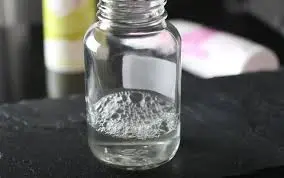SLES (Sodium Lauryl Ether Sulphate) 30%
Description
| Description | Sodium Laureth Sulfate (sodium lauryl ether sulfate/SLeS) is an anionic surfactant made from coconuts. It should not be confused with Sodium Lauryl Sulfate (SLS)—SLeS is much milder. The product has a low cloud point combined with rich stable foam. Detergency, wetting and emulsifying properties are excellent. |
| INCI | Sodium Laureth Sulfate |
| Appearance | Clear, viscous liquid - it is available at different concentrations and more concentrated versions are thicker. |
| Usage rate | Can be added to formulas as is. Recommended use level 25% - 70% depending on desired foaming and cleansing effects. Can be used at higher concentrations for bubble baths. |
| Applications | Shampoos, body wash, bubble bath and household cleaning products |
| Texture | Slippery, detergenty |
| Scent | Characteristically detergenty |
| pH | 7.5 (10% solution) |
| Charge | Anionic |
| Solubility | Water |
| Why do we use it in formulations? | Sodium Laureth Sulfate (SLeS) is an excellent lathering surfactant and is a great choice for a primary surfactant in any kind of foaming/cleansing product. It is also a fairly decent solubilizer. |
| Refined or unrefined? | Sodium Laureth Sulfate (SLeS) only exists as a refined product. |
| Strengths | Fantastic lather, great cleansing |
| Weaknesses | It is still a sulfate, which some people prefer to avoid due to possible irritation or colour-treated hair. It also tends to get confused with SLS, which isn’t really a weakness of the product itself. |
| Tips, Tricks, and Quirks | There is quite a lot of misinformation about the safety of SLeS. I recommend giving this a read. Neither SLS or SLeS are carcinogens. |
| Note | This can be thickened using salt (Sodium Chloride) and works over a range of pH from 5-10. For external use only. |
Your Dynamic Snippet will be displayed here...
This message is displayed because youy did not provide both a filter and a template to use.
%2030%25%20(500g)?unique=abbbacb)

%2030%25%20(500g)?unique=abbbacb)
